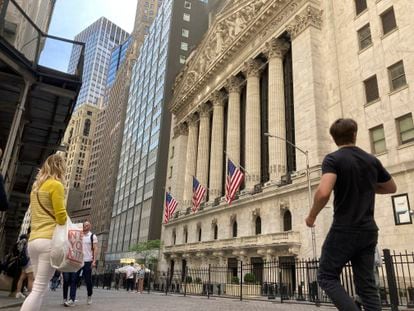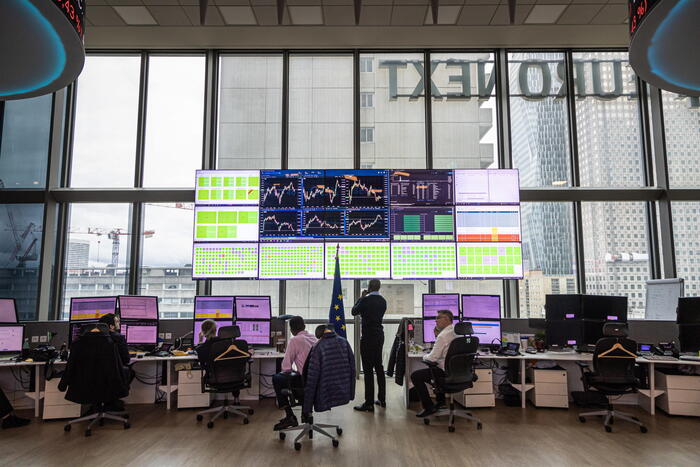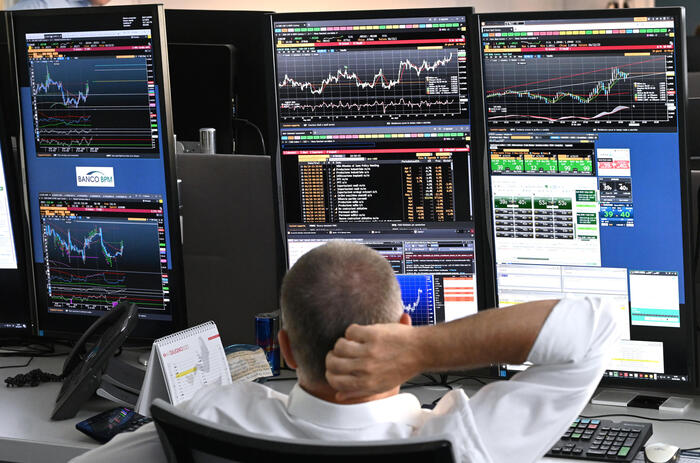Pedestrians walk past the New York Stock Exchange building, Wednesday, May 18, 2022.Peter Morgan (AP)
Wall Street has recorded a black day this Wednesday, with the Dow Jones index losing 3.6% and the technological Nasdaq 4.7% at the end of the session, in a market restless about consumption, the engine of the United States economy. Joined.
The floor was about to fit the biggest daily drop in almost two years, after the reduction in income during the first quarter of the important retail group Target, which today has plummeted 20%, dragged the S&P 500 industrial index into the red, with a decrease of 4%.
The big technology companies have also lost: Amazon, 5.21%;
Apple, 3.77%, and Netflix, 3.84%.
The Nasdaq technology index has been the most affected among the benchmarks.
The dollar and Treasuries gained amid a rally in safe-haven securities.
The gloomy results of the retailers have provoked new turbulence in the stock market, in addition to those experienced during the month of April, with a historic bump on the floor.
Target on Wednesday reported quarterly profit well below expectations, which it attributed to inflation and continued supply problems, as consumption remains broadly stable.
The chain reported $1 billion in profit between January and March, about half of what it made in the same period in 2021.
The day before, the large distribution chain Walmart, the largest private employer in the US, announced that its profits had fallen in the first quarter of its fiscal year by 25% compared to the same period of the previous year in the quarter.
Walmart made a gloomy short-term forecast against a backdrop of high inflation and growing fears of stagflation (high inflation and a stagnant economy).
Target, plagued like other major retailers by occasional stock-outs, had not suffered such a stock market setback since Black Monday in October 1987, when stock markets crashed in unison around the world.
Only the US stock market fell more than 20% that day.
Although buoyant consumer spending had so far pulled the wagon of the post-pandemic economic recovery, Target's fuel and freight costs soared in the first quarter, while the first signs of a change in consumer spending - a slight retraction in the purchases of clothing and household items - have led the company to write down inflated inventories.
The impact of inflation in the pocket of the American, especially perceptible in the cost of food, rents and energy, can cause a moderation in consumption that both Target and Walmart already anticipate.
Target shares have plunged 25% this Wednesday.
The shares had fallen 7% so far this year before the presentation of results for the quarter.
Target's operating profit will amount to only about 6% of sales this year, 2 percentage points below the previous forecast, the company explained.
“We have been [in the first quarter] less profitable than we expected, or intend to be over time,” said Brian Cornell, the company's chief executive officer.
"Looking ahead, it is clear that many of these cost pressures will persist in the near term."
Among the reasons that the company is considering to explain the setback, is the transformation of consumption habits due to the recovery from the pandemic.
If during the health emergency, households invested in the purchase of televisions or other household items, such as appliances and computers, the expansion that, as a rebound effect, has followed the normalization of habits now drives Americans to spend more on leisure and restoration.
In addition, strong inflation, which is at the highest levels in four decades, has forced the Federal Reserve to tighten its monetary policy.
In May, it approved the biggest rate hike in 22 years, by half a point, and plans to raise rates by the same amount in June and July.
Its president, Jerome Powell, has made it clear that he can apply even tougher increases if prices do not ease the pressure.
Rate hikes do not like in the stock markets.
Subscribe here to the EL PAÍS América newsletter and receive all the key information on current affairs in the region.









